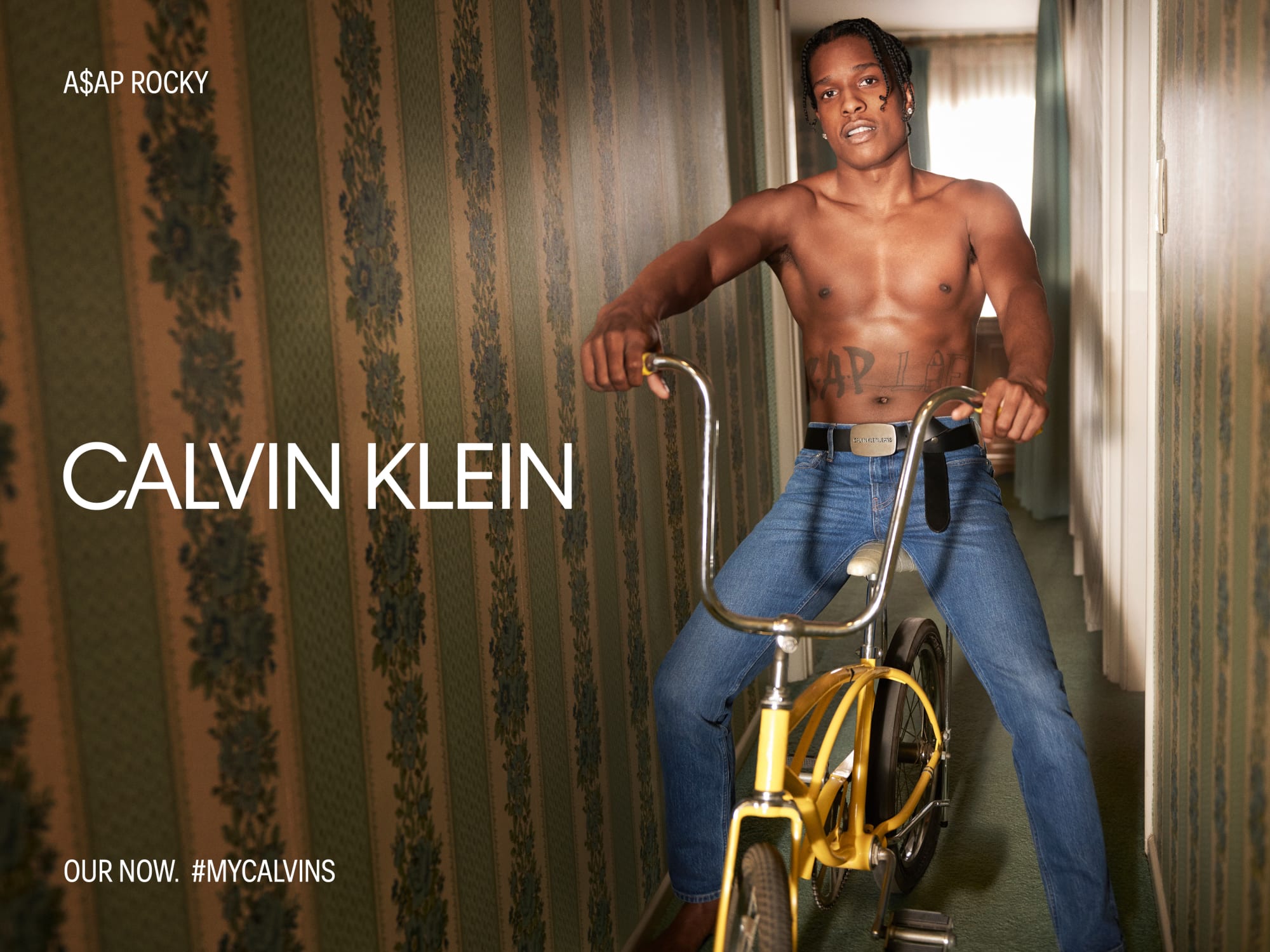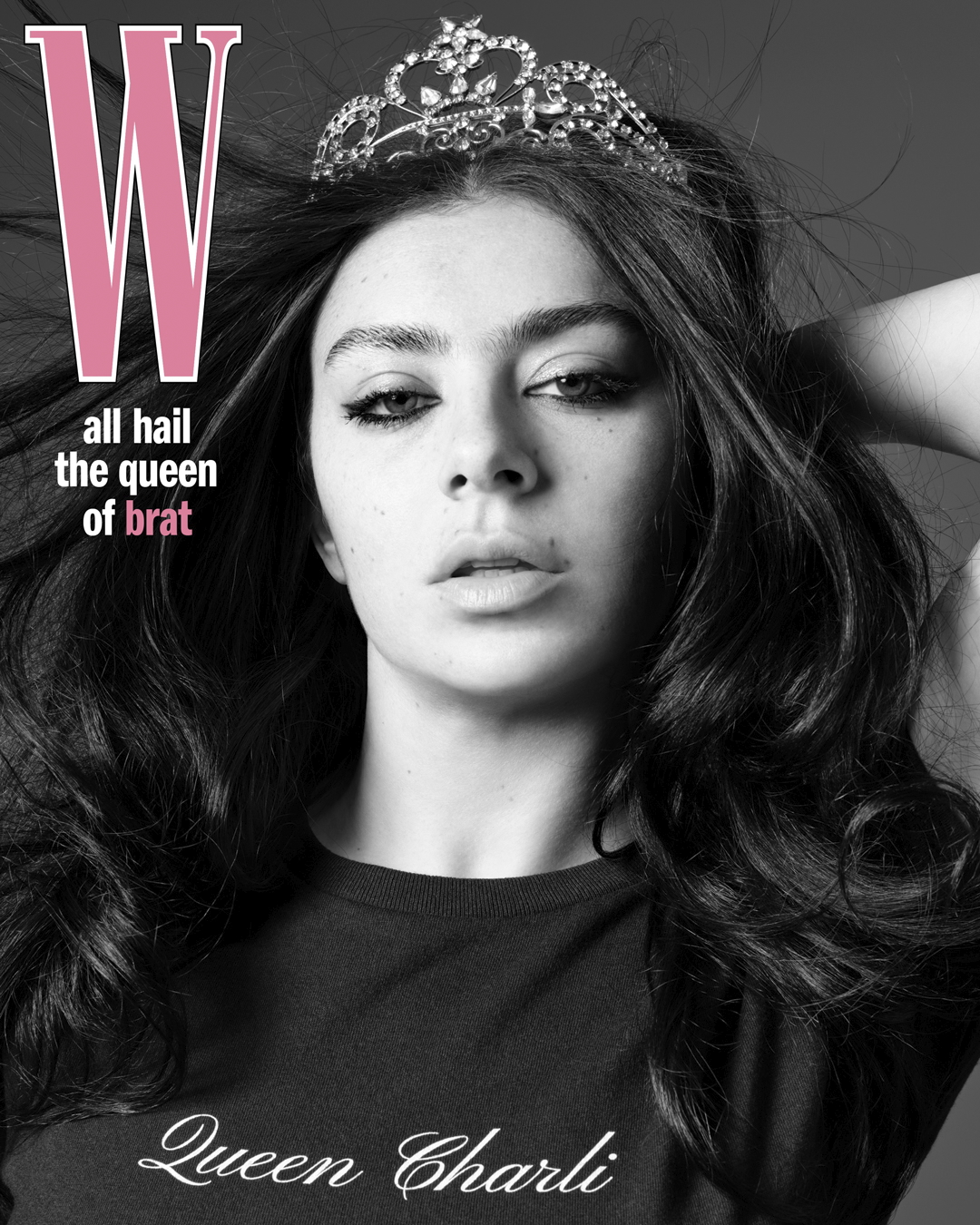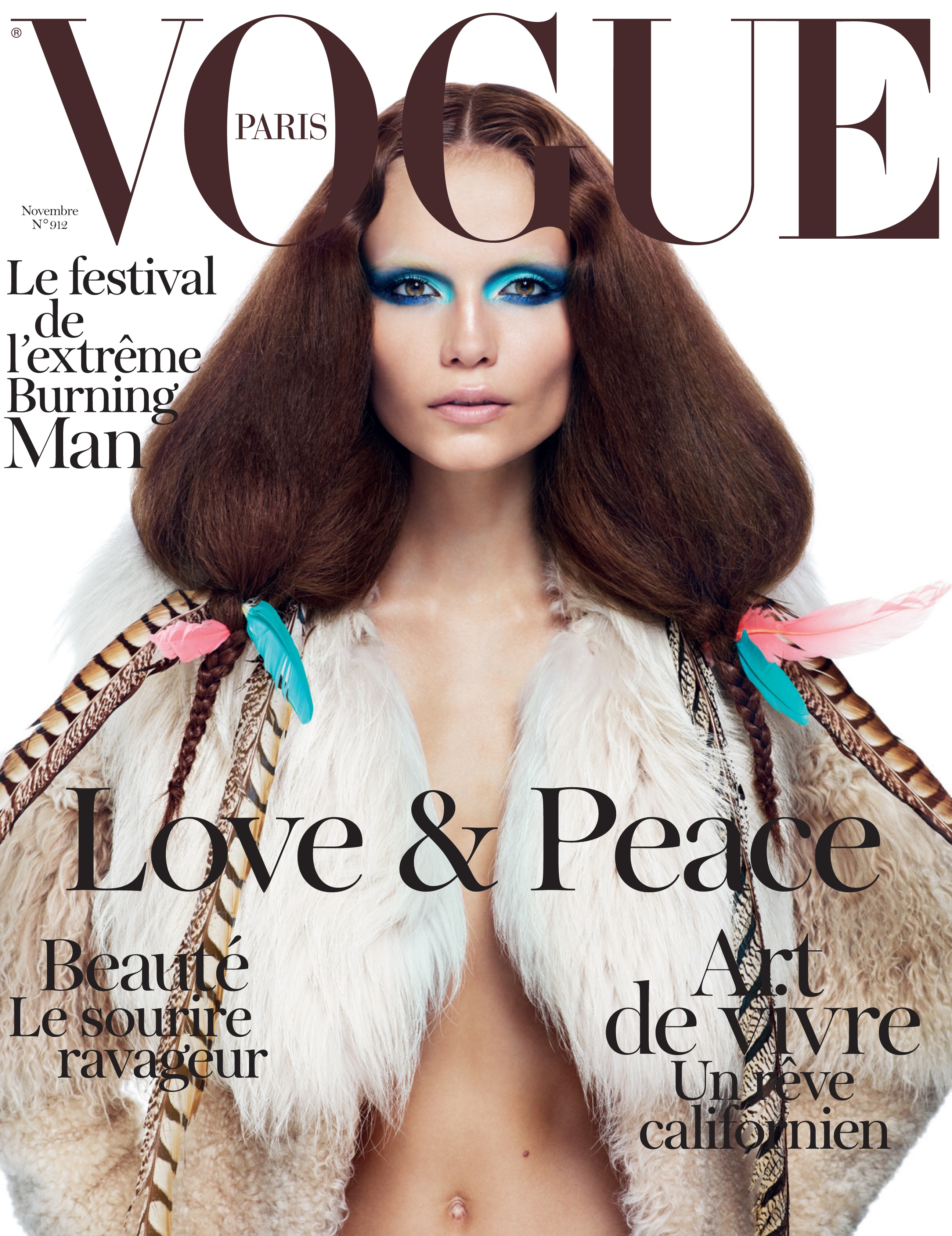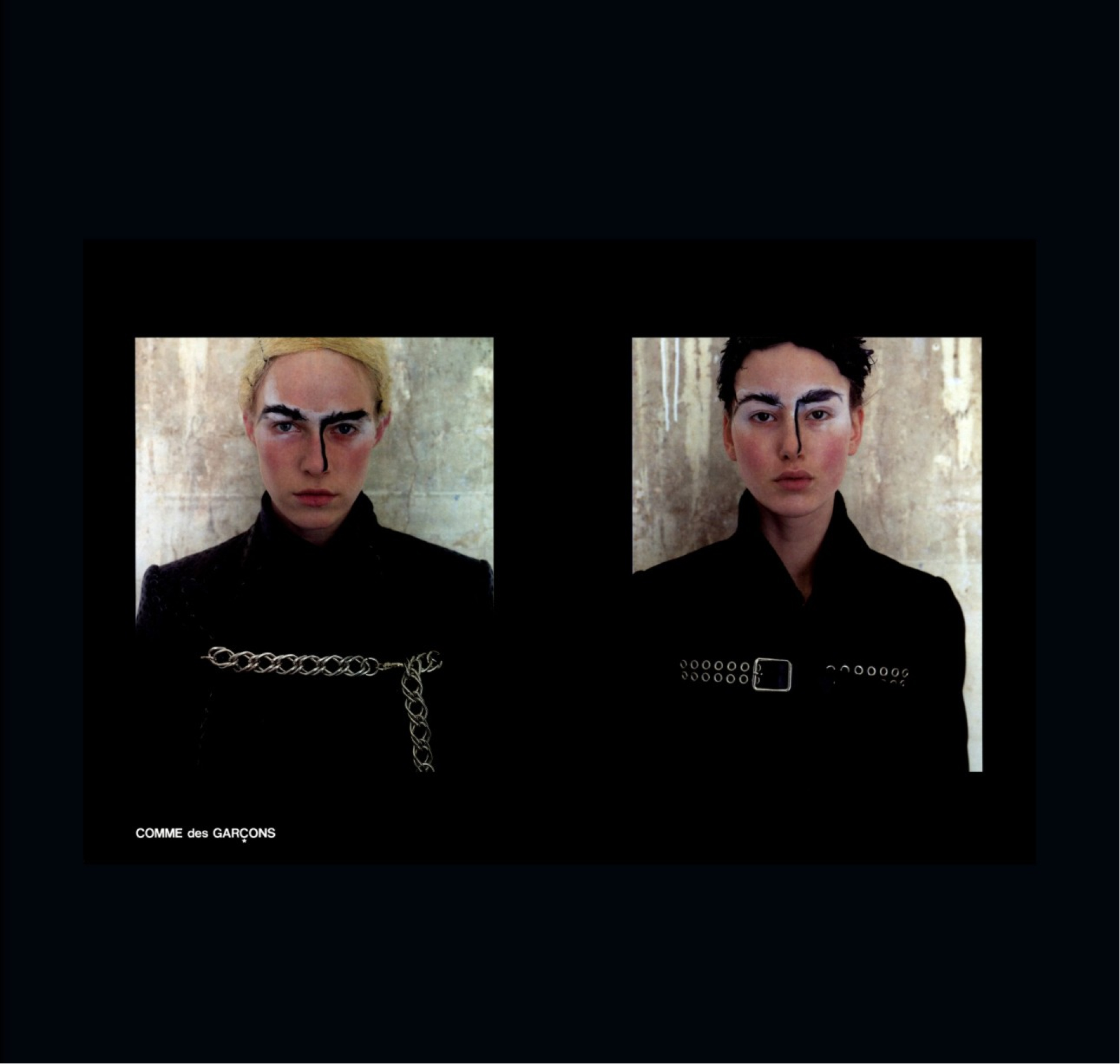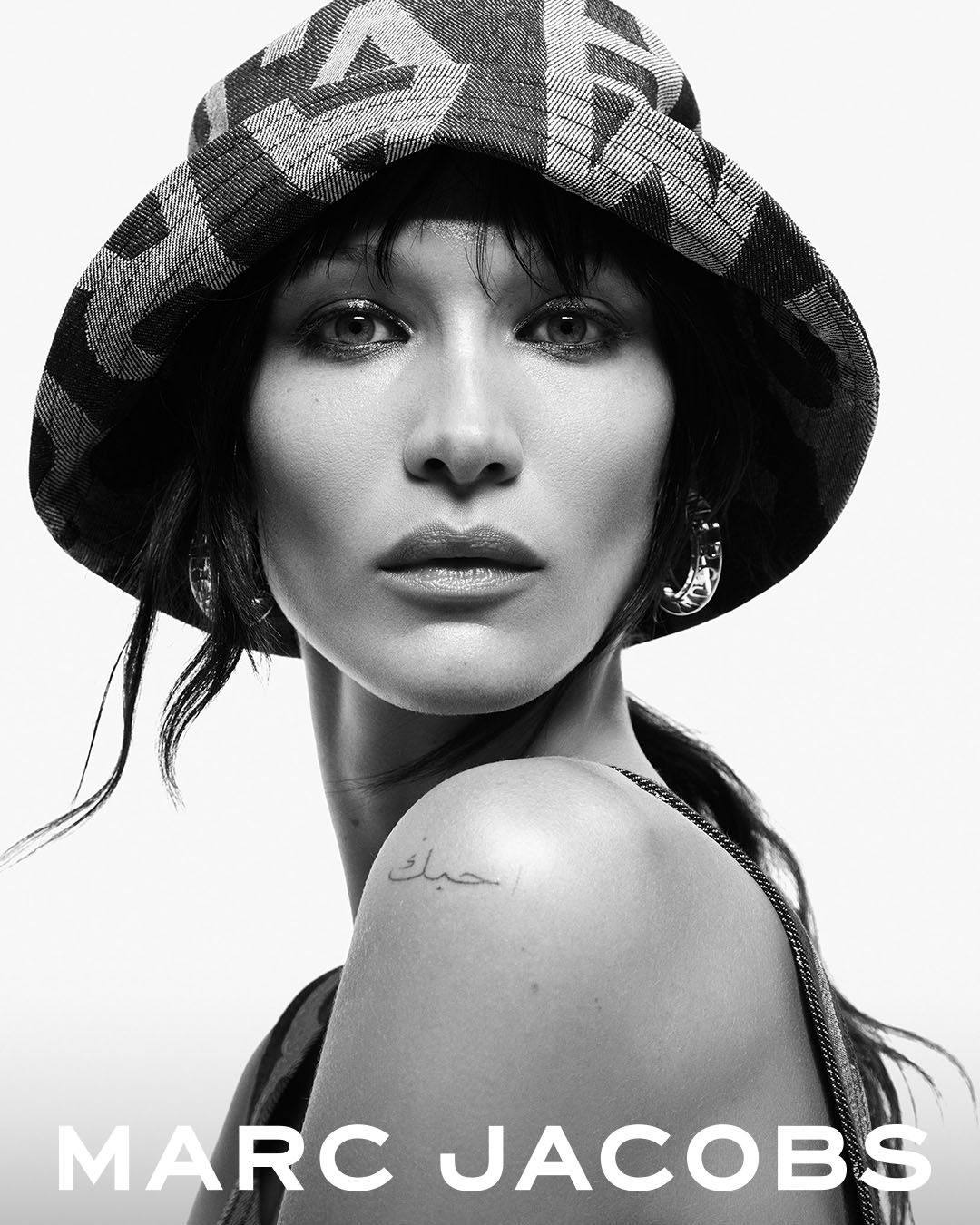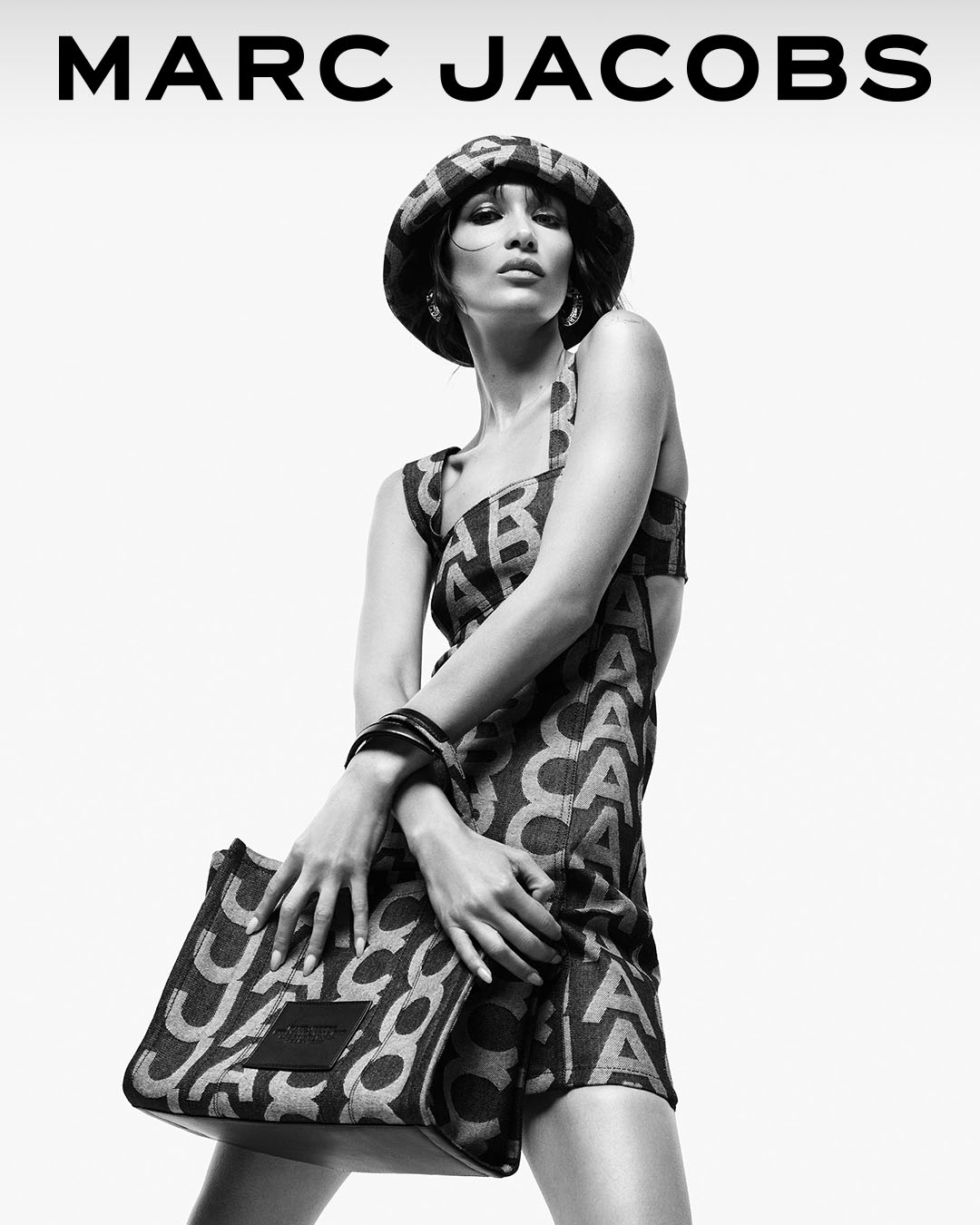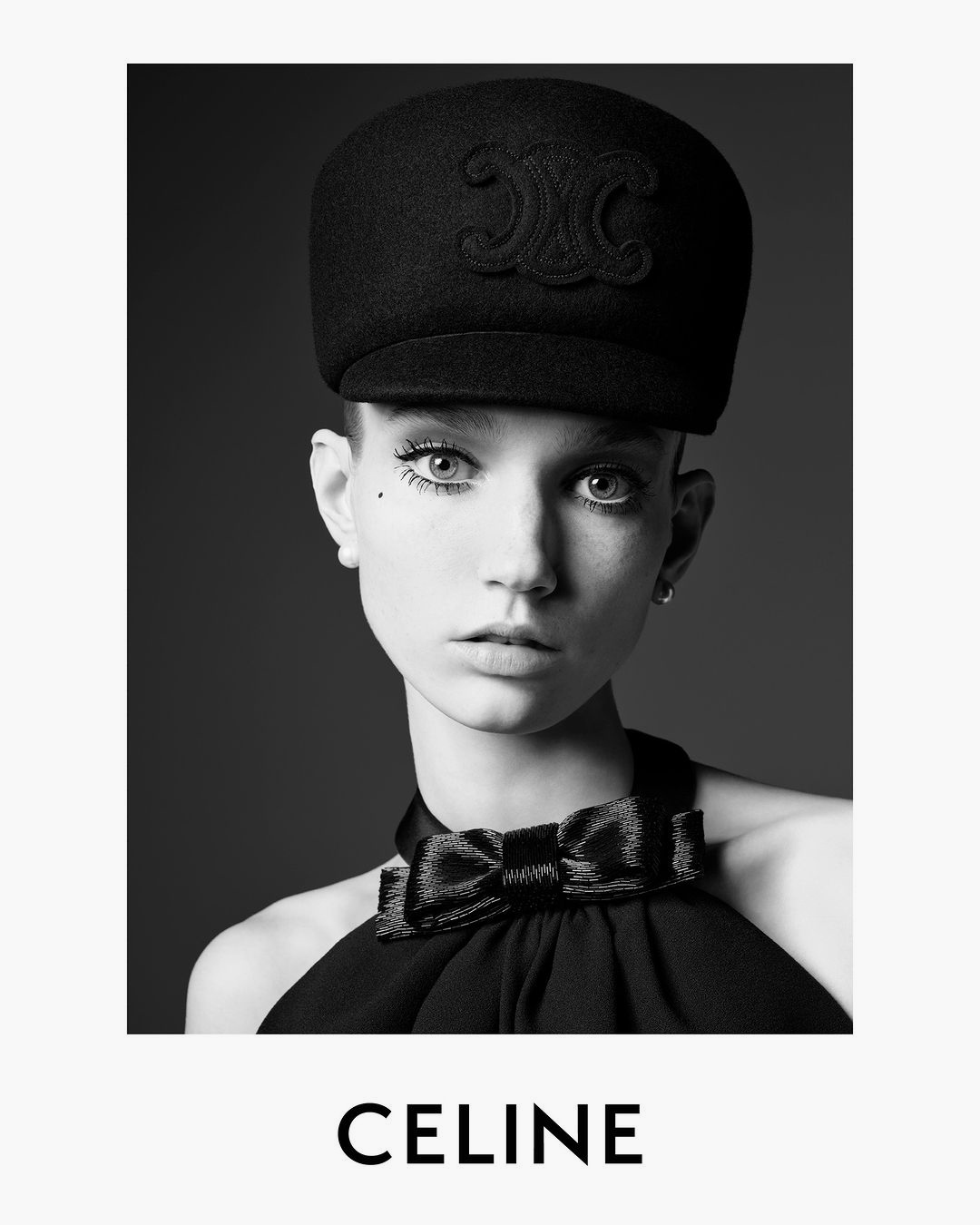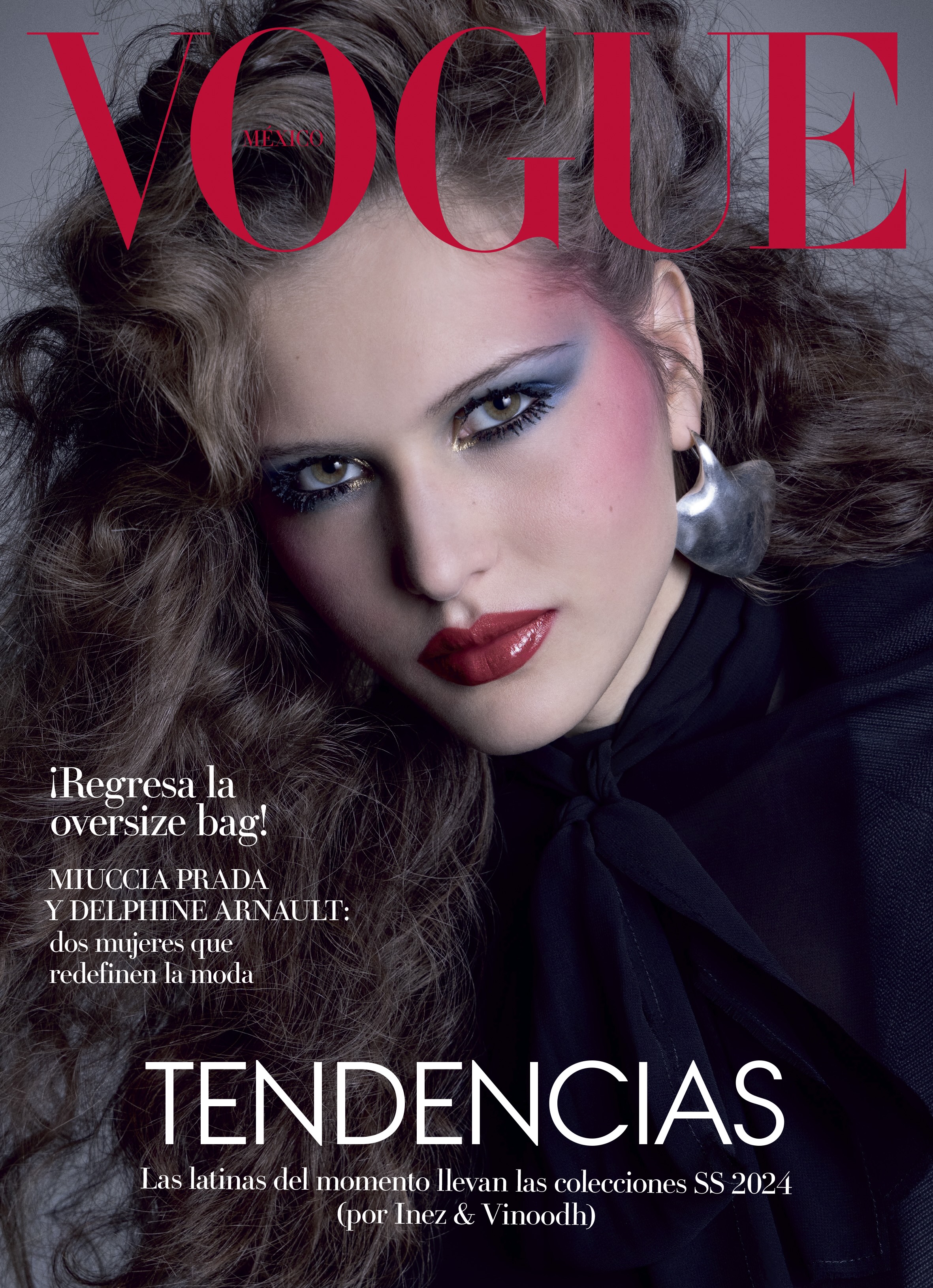There’s an undeniable punk spirit to Aaron de Mey’s beauty language that has stood out with quiet conviction and instinctual precision. From a New Zealand adolescence spent absorbing surf and skate mags along with i-D and The Face to defining beauty looks for Comme des Garçons, Saint Laurent, and Celine, de Mey’s trajectory reads as both a dreamer’s journey in self-actualization and uncompromising in execution. After the self-taught artist left art school disillusioned, he traded painting on linen canvases for testing on local New Zealand talent and creative friends that inspired him to do it all. “Being in a studio all day felt lonely, and I missed the energy of collaboration.” The makeup artist soon moved to New York and, within two weeks, painted Naomi Campbell for the i-D January 1998 cover, his approach always resisting the formulaic—favoring emotion, energy, and raw character. “When something looks too polished, it can start to feel sterile,” he reflects on what draws him to photographers like Hedi Slimane, Mario Sorrenti, Craig McDean, Glen Luchford, and Inez and Vinoodh. As he enters a new creative era, de Mey chatted with with Models.com editorial director Irene Ojo-Felix, tracing his creative evolution from DIY beginnings to decades of collaboration with fashion’s most exacting image-makers.
How did growing up in Auckland inform your relationship with makeup and beauty? Did you have any beauty icons?
From a young age, I was obsessed with style and self-expression. I didn’t want to wear what my parents bought me—I wanted to dress like the Dogtown and Z-Boys skate crew or Stacy Peralta. I was drawn to surf culture and street style but also deeply fascinated by old Hollywood, punk, and music icons. My dad gave me a camera when I was around 12, and my grandmother gave me a sewing machine—I started dressing up my sister, doing her makeup, photographing her in front of ’80s blinds, trying to emulate Robert Mapplethorpe pictures. I loved indie magazines like The Face or i-D. but was also absorbing influences from everywhere—Vogue, skateboarding and surf mags, music zines. I didn’t really have traditional beauty icons, but I was influenced by energy and attitude—people who had something raw and original about them. I think growing up in New Zealand, slightly removed from major fashion centers, gave me the space to experiment freely. There weren’t set rules, so I made up my own. That sense of resourcefulness and independence really shaped how I view beauty today.
You originally trained in fine arts back in New Zealand and even likened painting on a face to painting on canvas. What drew you from art school into the world of makeup artistry?
I always thought I’d be a painter or graphic designer—someone working in the fine arts. But once I got to art school, I quickly realized how isolating that world could be. Being in a studio all day felt lonely, and I missed the energy of collaboration. Around that time, some friends who were photographers and models started asking me to do makeup for their shoots. I had no formal training, but I said yes—and that really opened things up for me. In New Zealand, the industry was small, so you had to do everything—editorials, commercials, music videos—and that variety allowed me to experiment without pressure. I was working with different faces, different skin tones, and often not conventionally “beautiful” models, so I learned to create beauty through character and context. The crossover between art and makeup became clear to me—faces were just another kind of canvas. And what really drew me in was that makeup was immediate and collaborative; it felt alive.
After moving to New York in 1997, you famously landed a major assignment within weeks, doing makeup on Naomi Campbell for an i-D cover. What did that moment teach you?
Moving to New York was a leap—I hadn’t even been to America before. I arrived thinking I’d take six months to get settled, maybe look for an agent later. But within two weeks, I found myself working on shows with François Nars and then, suddenly, doing Naomi Campbell’s makeup for i-D with Edward Enninful. It was surreal. Naomi was lovely—she asked me how I knew how to do Black skin, and I explained that growing up in New Zealand, I’d worked with Polynesian and Māori communities, so I understood diverse tones. That moment gave me a huge confidence boost. I felt seen and supported by people I looked up to, and that kind of encouragement early on made all the difference. After that, François took me on at his agency, and the work started snowballing. It felt like the universe had opened a door and said, “You’re ready.”
By the early 2000s, you were working with the likes of Craig McDean, Steven Klein, and Mario Sorrenti. How did that influence your development?
Working with those kinds of photographers early in my career was both intimidating and incredibly motivating. Edward Enninful introduced me to Craig McDean, and Joe McKenna connected me with Steven Klein and Mario Sorrenti. Being trusted in those rooms, with that level of talent, taught me so much. It wasn’t just about doing good makeup—it was about being able to collaborate, to read the energy of a shoot, to contribute something meaningful. Craig, in particular, helped me develop a stronger editorial eye. I realized quickly that to grow, you had to be open and adaptable, and you had to find out who you worked best with. At the time, I said yes to everything. That hustle helped me build relationships and figure out my strengths. The experience of stepping into Pat McGrath’s shoes, for example, was a huge pressure—but also a huge honor.
Your makeup swings between high-definition glam and barely-there minimalism. What draws you to these extremes?
I’ve always been fascinated by contrast. I like extremes in fashion, in culture, in music—so it makes sense that my makeup follows that same rhythm. Sometimes I’m drawn to hyper-defined, almost theatrical beauty, and other times I love the illusion of no makeup at all. What matters most to me is that it feels true to the person wearing it and to the story we’re telling. When something looks too polished, it can start to feel sterile. But if it’s a little off, a little raw—it suddenly becomes more interesting, more believable. That tension between artifice and reality is where I like to work. I don’t really do “in-between” looks. For me, beauty is about mood, not rules.
Focusing on imperfection, I read a story that an early turning point was working on Rei Kawakubo’s Comme des Garçons “Punk” show in 2000. How did that advice to embrace imperfection shift your approach?
That experience was transformative. Rei literally told me the makeup was “too perfect” and instructed me to use my opposite hand. It was surreal but also made total sense. Her vision was punk—not just aesthetically, but in spirit—and she wanted that reflected in every detail. That moment gave me permission to let go of technical perfection. It taught me that something rough or off-kilter could be far more powerful than something meticulously executed. It also helped me discover my own style: I don’t want to erase people’s flaws—I want to enhance what’s already there. Rei’s challenge pushed me to see beauty through a new lens. It was a radical kind of freedom.
You’ve worked with such a wide range of designers—from Rei Kawakubo to Hedi Slimane and Vivienne Westwood. How do you approach each collaboration differently?
Every designer has their own universe, so I try to tune into what they’re trying to say. With someone like Rei, it’s about abstraction and concept; with Hedi, it’s about realism and attitude. Vivienne Westwood was theatrical and political. My role is to support their vision while still bringing something of myself. I never want to impose a generic “look” on a collection. I observe how the models move, what the clothes feel like, what story we’re telling. Each collaboration is a kind of translation—taking the language of fashion and turning it into something visual on the face. It keeps me constantly evolving. I love the challenge of adapting, but also holding onto my core sensibilities.
Your long-standing partnership with Hedi Slimane is one of fashion’s most enduring. What makes your collaboration with Hedi so unique?
Hedi and I have a deep trust and mutual respect that’s rare. He never gives me specific instructions—he sets a tone with music, casting, or a reference, and then he lets me interpret that. What’s different about working with him is the process: I’m not just doing tests, I’m part of the fittings for weeks. Every look is tailored to each model, so the final result feels personal and authentic. He’s someone who truly understands casting—he chooses people based on their energy, their interests, not just their looks. That makes the work much more dynamic. I always want to give him 150%, not because he demands it, but because I want to impress him, to inspire him. We can disagree, and that’s okay—there’s room for conversation. That’s what makes it a real creative partnership.
Among all the looks you’ve done, is there one that feels like a turning point for you creatively?
The Comme des Garçons punk campaign will always be special. It felt like the beginning of everything in a way, because it broke open how I thought about beauty. Rei challenged me to take risks, and that gave me the confidence to approach makeup with more emotion and experimentation. I’m also incredibly proud of all my work with Hedi. Whether at Dior Homme, Saint Laurent, or Celine, each collection brought something new. The consistency of our collaboration has helped me grow as an artist. It’s not about one big moment—it’s about showing up, evolving, and continuing to be challenged. That’s what I value most in my career.
You mention the casting—there seems to be a love of fearless characters in your work.
Yes, always. I’m drawn to people who bring something unexpected to the table. It’s not about conventional beauty—it’s about energy, attitude, and individuality. The best models, for me, are collaborators. They inspire you to push further, to refine your ideas. I’ve always loved working with people who aren’t afraid to take risks, who want to explore character rather than just look “pretty.” That’s something Hedi understands deeply in his casting. He gives people the space to perform, to inhabit a mood—and that inspires me to do the same.
What are some of your biggest sources of inspiration when dreaming up new concepts?
Inspiration comes from everywhere. Of course, art and film and music are important, but I also love brutalist architecture, furniture design, even cars and food. I’m always collecting ideas from everyday life. I think the key is to stay open, to listen. Some of the best stories come from the people you’re working with—models, photographers, stylists. Debbie Harry once told me she just absorbed New York like a sponge, and that’s something I’ve always tried to do. I want to be present, to notice the small things. Those details often spark the most interesting ideas.
“…the pendulum has swung too far into overexposure…I’d love to see a return to some of the mystery…”
You’ve witnessed the fashion and beauty world evolve from the ’90s to today’s digital landscape. How has the role of a makeup artist changed?
It’s changed dramatically. When I started, there was a real sense of mystery—you didn’t see the process, you only saw the final image. Backstage access was limited, and makeup artists were behind the scenes, not front and center. Now, with social media and influencers, everyone wants to know how the sausage is made. Some of it is great—I admire how resourceful and creative these kids are—but it’s also led to a lot of misinformation and unrealistic beauty standards. I’ve never been interested in being a personality or doing tutorials. For me, it’s always been about the model and the photograph. That’s why I’ve stayed out of the spotlight. I think the pendulum has swung too far into overexposure, and I’d love to see a return to some of the mystery and focus on the craft.
What has been the craziest impromptu situation you’ve had to navigate on a job, and how did you deal with it?
There’ve been a few! One time, I arrived in Miami for a Harper’s Bazaar shoot with Craig McDean and Melanie Ward, and my entire makeup kit was lost in transit. The hairstylist didn’t show either, so I was on the verge of a breakdown. But Melanie was incredible—she took me to CVS, we bought a gray eyeshadow and concealer, and we made it work. We used saltwater from the ocean to style the hair, wrapped a scarf around the model’s head, and ended up creating one of my favorite shoots ever.
Another time, after 9/11, I flew to Milan for Prada and Miu Miu with no kit again. I had read that Marlene Dietrich used soot and Vaseline on her eyes, so I recreated that, and used blackberry juice to stain the lips and cheeks. What felt like disasters turned into some of my most creative moments. They reminded me that limitations can be liberating.
With such a celebrated career, how do you define success and fulfillment at this stage?
Success, for me, is about staying true to yourself and your values. I’ve been fortunate to work with people I admire—Grace Coddington, Joe McKenna, Hedi Slimane—who share that same commitment to fashion and image-making. I don’t need to be everywhere or work with everyone. I’d rather do fewer projects that feel meaningful than chase every opportunity. Editorial is still where my heart is. I want to make images that inspire, that endure, that say something about beauty in a deeper way. I’m not interested in being a glam squad makeup artist. I’m in it for the fashion, for the artistry, for the culture. That’s what keeps me fulfilled.
The beauty landscape is constantly changing. What evergreen advice would you give to aspiring makeup artists today?
First, figure out what kind of artist you want to be—do you want to work in fashion, film, celebrity, bridal, or be an influencer? Then find your style. Don’t copy others—develop a point of view and refine it. You don’t need a huge kit. Some of the best makeup can be done with five products and a clear idea. Study the greats—people like Way Bandy—and understand the history of your craft. Stay humble and keep learning. Focus on your work, not your following. And most importantly, be kind and professional. People remember how you made them feel on set. That’s what builds a lasting career.
Finally, as an artist continually pushing boundaries, what’s next for you?
Right now, I’m really interested in doing smaller, more personal collaborations. I’d love to create a beauty fanzine inspired by early ’70s punk zines and skate culture, but rooted in beauty and identity. I’m also exploring ideas around a makeup line—something high-fashion and makeup-artist-driven, in the spirit of what François Nars or Serge Lutens created. But I want to take my time and do it right. I’ve also been thinking about a clothing collab, something that merges beauty and fashion in an unexpected way. And in the meantime, I’ll keep doing editorial—I still love the magic of being on set. I’m also excited by all the changes in the industry. There’s more inclusivity, more space for different voices. I want to keep evolving with it while staying anchored in what I love most: honest, expressive, character-driven beauty.
